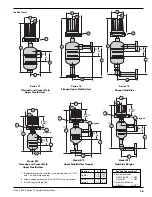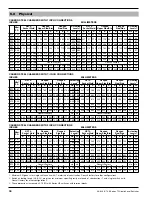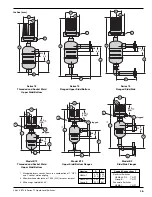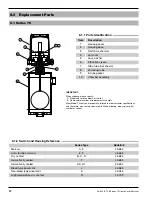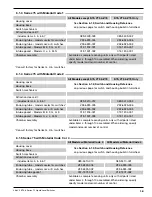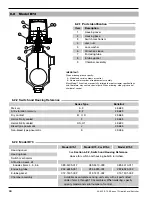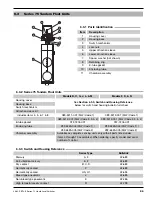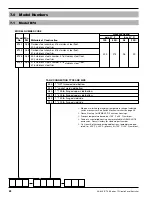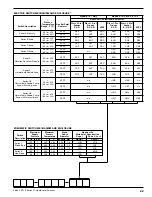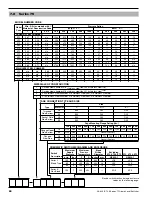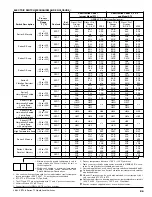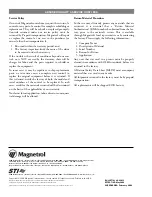
11
46-620 B73 & Series 75 Liquid Level Switche
s
4.1.2 Inspect Switch Mechanisms, Terminals, and
Connections Monthly
1. Mercury switches may be visually inspected for short circuit
damage. Check for small cracks in the glass tube containing
the mercury. Such cracks can allow entrance of air into the
tube causing the mercury to “oxidize”. This is noticeable as
the mercury will appear dirty or dull, and will not break
into clean, round pools. If these conditions exist, replace
the mercury switch immediately.
2.
Dry contact switches should be inspected for excessive
wear on actuating lever or misalignment of adjustment
screw at point of contact between screw and lever. Such
wear can cause false switch actuating levels. See
Section
6.1.2, Switch and Housing Reference
on page 19 for
bulletin supplied with control should switch adjustment
or replacement be necessary.
3. DO NOT operate your control with defective or
mal-adjusted switch mechanisms. See
Section 6.1.2,
Switch and Housing Reference
on page 19 for bulletin on
switch mechanisms furnished for service instructions.
4. Level controls may sometimes be exposed to excessive heat
or moisture. Under such conditions, insulation on electrical
wiring may become brittle, eventually breaking or pealing
away. The resulting exposed wires can cause short circuits.
NOTE: Check wiring carefully and replace at the first sign of brittle
insulation.
5. Vibration may sometimes cause terminal screws to work
loose. Check all terminal connections to be certain that
screws are tight.
6. On units with pneumatic switches, air (or gas) lines
subjected to vibration, may eventually crack or become
loose at connections causing leakage. Check lines and
connections carefully and repair or replace if necessary.
NOTE: As a matter of good practice, spare switches should be kept
on hand at all times.
4.1.3 Inspect Entire Unit Periodically
Isolate control from vessel. Raise and lower liquid level to
check for switch contact and reset.
4.2
What To Avoid
Caution:
Operation of all buoyancy type level devices should be
done in such a way as to minimize the action of dynamic
forces on the float or displacer sensing element. Good
practice for reducing the likelihood of damage to the control
is to equalize pressure across the device very slowly.

















